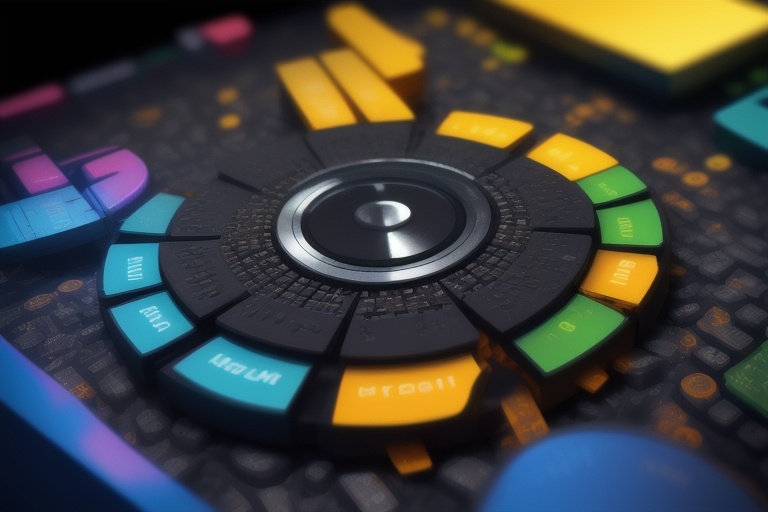Artificial intelligence (AI) is transforming the way we live and work, offering both promise and provocation. The emergence of AI presents a paradox – the potential displacement of jobs and the simultaneous creation of new opportunities and efficiencies. Amidst this technological frontier, generative AI has come to the fore. Touted for its ability to produce content nearly indistinguishable from that made by humans, generative AI stands as a beacon of potential in reshaping industries, while simultaneously stirring debates about the future of human creativity in professions such as journalism and art.
Artificial intelligence (AI) is transforming the way we live and work, offering both promise and provocation. The emergence of AI presents a paradox – the potential displacement of jobs and the simultaneous creation of new opportunities and efficiencies. Amidst this technological frontier, generative AI has come to the fore. Touted for its ability to produce content nearly indistinguishable from that made by humans, generative AI stands as a beacon of potential in reshaping industries, while simultaneously stirring debates about the future of human creativity in professions such as journalism and art.
The Advent of Generative AI
Generative AI refers to a class of artificial intelligence that can generate novel content, from written text to images and music, that mimics human-like quality. Using machine learning algorithms, particularly Generative Adversarial Networks (GANs) and transformer models, this technology is rapidly advancing, showcasing an impressive ability to innovate and create. It has applications across a broad spectrum of industries, including entertainment, marketing, and education. By automating the production of content, generative AI offers a substantial increase in productivity and the power to revolutionize content creation altogether.
Measuring the Impact on Creative Professions
One cannot ignore the disruptions that generative AI might inflict upon the workforce, particularly in creative domains. As AI continues to replicate and sometimes surpass the intricacies of human creativity, professionals within the fields of journalism, art, and design are finding themselves face-to-face with a double-edged sword. On one hand, AI can assist in generating ideas, layouts, and drafts at unprecedented speeds, fostering a new era of innovation. On the other hand, there lies a legitimate concern: will this technology render human creativity less valuable or even obsolete?
The Economic Implications of Artificial Creativity
Economically, the implications of generative AI are vast and uncertain. If we witness a widespread adoption of AI in creative industries, it could result in a paradigm shift in labor dynamics. Professionals may find themselves contending with an influx of AI-generated content that could increase market competition and exert downward pressure on wages. Yet, the precise economic impact is still undetermined and will largely depend on how effectively firms and economies integrate AI into their systems.
Navigating the Job Market Landscape
The workforce may experience a seismic shift as AI reshapes job roles, necessitates new skills, and possibly reduces the demand for certain occupations. Nevertheless, it's important to recognize the potential for AI to complement human abilities, rather than simply replace them. Implementing AI in a manner that augments human work can lead to a future where AI and humans coexist in synergy, leading to richer, more efficient, and innovative outcomes.
The Role of Governments and Industries
In guiding the integration of AI, the responsibility falls upon governments and industry leaders to act with foresight and prudence. It is imperative for policy to anticipate and mitigate the impacts of AI, facilitating a pathway for workers to transition into the evolving job landscape. Education and training programs playing catch-up with the pace of AI development is key to preparing the workforce for a future intertwined with artificial intelligence.
A Responsible Approach to Embracing AI
It's crucial for industries to harness AI responsibly and with the vision to bolster job quality and catalyze economic growth. By emphasizing the collaborative potential of AI, industries can foster a conducive environment where human creativity is amplified, not supplanted. A focus on ethical AI deployment and continuous learning for workers can ensure that the workforce is prepared and AI's benefits are maximized.
The Horizon of Opportunity
Despite the uncertainty surrounding AI, it holds a horizon of opportunities. If approached with a balance of caution and enthusiasm, AI has the power to usher in a new epoch of creativity and productivity. As we stand on the cusp of transformative change, it is both a challenge and our collective responsibility to navigate the path that AI is paving toward the future. Embracing change, adapting to new paradigms, and fostering a positive collaboration between AI and human intelligence will be pivotal in unlocking the full potential of what artificial intelligence can offer.
As our understanding of AI's capabilities and its implications continues to evolve, it's clear that the conversation is not just about technology, but about the broader societal and economic context in which it operates. The journey toward AI integration will be iterative and complex, requiring thoughtful analysis and strategic planning to ensure that the future of work benefits all. With the right approaches, artificial intelligence and machine learning hold the promise to not only revolutionize industries but to empower society in ways that were once unimaginable.
Information for this article was gathered from the following source.

